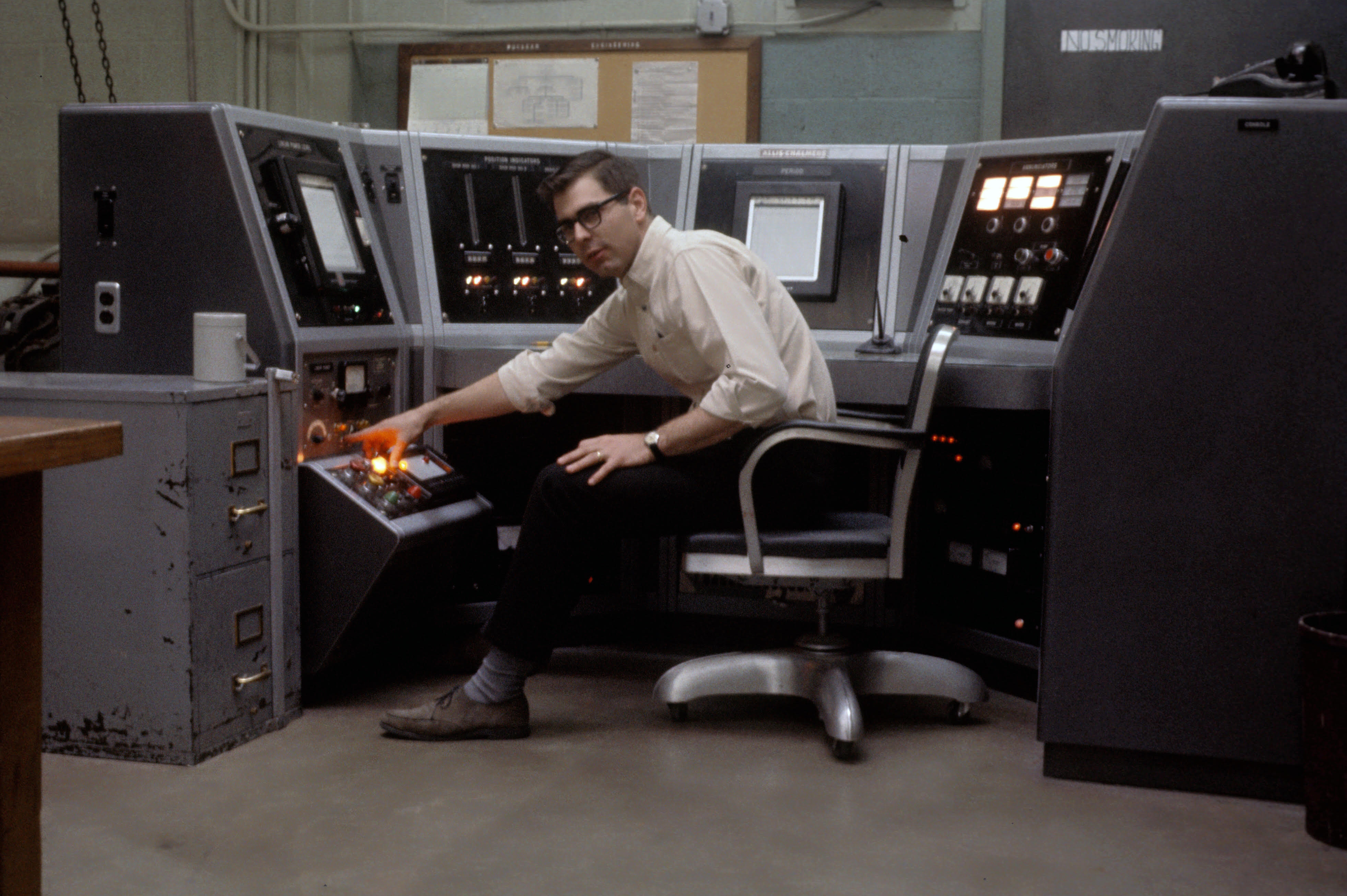News Story
Glowing ‘Gem of the University’ Observed Its 50th Anniversary

An operator mans the controls in MUTR’s early days. (Photo via University Archives)
Story by Chris Carroll for Maryland Today.
Tech-minded Terps can reel off some marquee research facilities that dot the campus—the historic Glenn L. Martin Wind Tunnel, the 367,000-gallon Neutral Buoyancy Research Facility built to support NASA operations, the quantum labs buried deep beneath several campus buildings. But one important site almost certainly not on those lists is UMD’s nuclear reactor, which this past summer quietly marked its 50th anniversary.
It has trained hundreds of students in reactor operations and provided radiation for countless experiments and tests. And, just maybe, it inspired America’s most famous fictional nuclear technician, Homer Simpson. (The late engineering Professor Joseph Silverman, who helped develop the reactor, is the father of a longtime animator/director of “The Simpsons,” David Silverman.)
But don’t have a cow. If the Maryland University Training Reactor (MUTR) resembled the TV series’ mishap-prone nuclear plant, federal nuclear safety officials wouldn’t have recently used it—the closest reactor to the U.S. Capitol—as a showcase and tour site for visiting international dignitaries.
“This is a gem of the university, and really, it’s a national resource,” said Timothy Koeth, assistant professor of materials science and engineering and MUTR director from 2013-19.
When he took over as director, campus and A. James Clark School of Engineering administrators were weighing closure of the reactor since the nuclear engineering major ended more than a decade earlier.
Part of a class of reactors designed to be safe enough for student trainees to control, UMD’s version doesn’t generate electricity and is a pipsqueak compared to typical nuclear power plants. Even compared to the 23 other U.S. university research reactors, MUTR has just 1/40th the power of the largest. (An earlier UMD reactor was even less potent but used now-forbidden highly enriched uranium.)
Koeth saw potential for teaching and research, and reinstated a reactor operator training program. Since 2015, it has graduated 15 students, many of whom have gone on to nuclear industry careers.
The Clark School’s nuclear engineering minor heavily relies on MUTR; with interest growing in advanced nuclear power technologies, participation has surged from seven students in 2020 to 30 this fall, said Amber Johnson, current nuclear reactor and radiation facilities director.
“Younger people seem to be oriented toward thinking about climate change, and how nuclear power can help prevent it,” she said.
Operating on its original fuel, MUTR still develops about 60% of its maximum rated power of 250 kilowatts. In a highly choreographed and federally scrutinized operation, staffers brought in new fuel rods in 2017, storing them in the reactor tank—6,000 gallons of water that cools the core while the reactor is in operation. After technical and pandemic-related delays, the team plans to bring it back up to full power with a refueling operation this winter, followed by a new cooling system so the reactor can operate more hours per day.
Mike Hottinger, radiation systems manager, points to the towering, red-painted concrete structure in the middle of a room in the Chemical and Nuclear Engineering Building that houses the reactor pool and core. “It can easily go another 50 years.”
Published September 10, 2024









